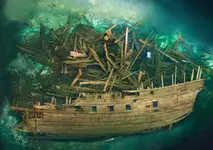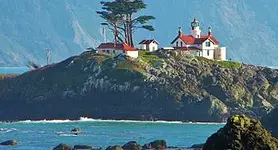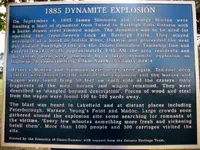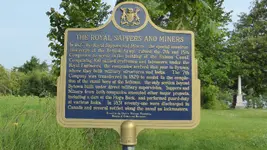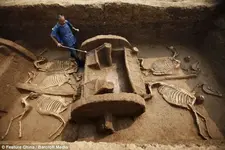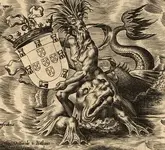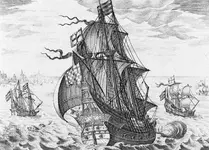Tejaas
Hero Member
- Joined
- Sep 8, 2012
- Messages
- 826
- Reaction score
- 1,019
- Golden Thread
- 0
- Location
- TX Hill Country
- Detector(s) used
- Garrett AT PRO ~ Propointer ~ Modified Lesche ~ Predator Little Eagle ~ Royal Picks ~ Marshalltown Trowels ~ Sift Tables/Screens
- Primary Interest:
- Relic Hunting
RANDOM PICTURE THREAD - Post ANY of your favorite pictures here to share with...
Cool thread, i'll play along.
I really enjoy images pertaining to Texas History. These are all widely distributed, but i find them interesting. A lot of these tie into my family history.
Enlisted men of Company C, 8th Texas Cavalry (Terry's Texas Rangers):

PVT. Simeon Crews, Company F ("Victoria County Rangers") - 7th Texas Mounted Volunteers:

Kerrville-based artist Roy Andersen's depiction of the Confederate advancement at Pigeon's Ranch during the battle of Glorieta, New Mexico. Confederate elements of the 2nd, 4th, 5th & 7th Texas Mounted Volunteers (Sibley's Brigade) faced heavy opposition by Chivington's 1st Colorado Cavalry. A few years later, Chivington would come under federal review for war crimes committed at the 1864 Sand Creek Massacre:

A Confederate victory that came too late - This photograph was taken on the grounds of the last battle of the American Civil War. The fighting at Palmito Ranch (Cameron County, TX) took place 34 days after Lee surrendered at Appomattox:

Longhorn Caverns (Burnet County, TX). During the Civil War, Confederate soldiers utilized the caverns as a powder mill. The cave system provided an abundant supply of bat guano, from which they would extract saltpetre. I found a document years ago in the state archives that stated the cavern mill could steadily produce 80-100 pounds of saltpetre a day... With 100 pounds of guano yielding 4 pounds of saltpetre:

The Treue Der Union Monument (Kendall County, TX). Unique due to the fact that it is the only Union monument located on formerly-Confederate soil, it was erected in 1866 over the mass grave of 36 Union-sympathetic german "Home Guards" that were massacred along the Nueces River by McRae's Confederate Partisans:

The Gault Site (Bell County, TX).
First recorded by Dr. Michael Collins (Pictured) and Dr. Thomas Hester, the Gault Site was ground zero for studying Clovis culture in North America... Until they dug too deep and realized there was something older! North America's inhabited history effectively jumped from 13,000 to 15,500 years old, and the term "Pre-Clovis" has come to use in North America because of published findings out of the BCC. Hopefully the sister-sites located in the other 8 states turn up similar findings!

Swordsman's Gauntlet (Floydada, TX).
As Coronado moved up thru Texas, he utilized Blanco Canyon as a strategic encampment. In the 1950's, a farmer discovered the gauntlet while plowing a field and added it to his indian artifact collection where it stayed until the 60's when he had it identified by scholars. Fast forward to the 90's, a hobby detectorist is hunting nearby and discovers copper crossbow bolt points. An excavation ensues, and Coronado's path thru Texas is largely discovered.

The French occupation of Texas - the last 20 years have expanded the French portion of Texas history by tenfold due to two discoveries, both revolving around the famous explorer Robert Cavelier de La Salle.
1995 saw the discovery of La Salle's flagship 'La Belle' in Matagorda Bay... And the subsequent excavation marked the first use of a cofferdam in North America to recover a shipwreck. 1996 saw the discovery of Fort St. Louis, built by La Salle's exploration party. Both sites are still actively being studied.


Billy Dixon - Second Battle of Adobe Walls.
Along with Bat Masterson and 26 other buffalo hunters, they spent three days besieged by hundreds of indians led by Quanah Parker. On day three, Dixon borrowed a .50-90 Sharps and tumbled a respected tribal elder backwards off his horse - from over 1500 yards away - which quickly ended the hostilities. Dixon always claimed it was a lucky shot, but modesty ran rampant back then... Yea, Chris Kyle bested him by 560 yards... But it was also 134 years later, and with a McMillan Tac-338. I'd bet they are arguing about it right now.

~Tejaas~
Cool thread, i'll play along.
I really enjoy images pertaining to Texas History. These are all widely distributed, but i find them interesting. A lot of these tie into my family history.
Enlisted men of Company C, 8th Texas Cavalry (Terry's Texas Rangers):

PVT. Simeon Crews, Company F ("Victoria County Rangers") - 7th Texas Mounted Volunteers:

Kerrville-based artist Roy Andersen's depiction of the Confederate advancement at Pigeon's Ranch during the battle of Glorieta, New Mexico. Confederate elements of the 2nd, 4th, 5th & 7th Texas Mounted Volunteers (Sibley's Brigade) faced heavy opposition by Chivington's 1st Colorado Cavalry. A few years later, Chivington would come under federal review for war crimes committed at the 1864 Sand Creek Massacre:

A Confederate victory that came too late - This photograph was taken on the grounds of the last battle of the American Civil War. The fighting at Palmito Ranch (Cameron County, TX) took place 34 days after Lee surrendered at Appomattox:

Longhorn Caverns (Burnet County, TX). During the Civil War, Confederate soldiers utilized the caverns as a powder mill. The cave system provided an abundant supply of bat guano, from which they would extract saltpetre. I found a document years ago in the state archives that stated the cavern mill could steadily produce 80-100 pounds of saltpetre a day... With 100 pounds of guano yielding 4 pounds of saltpetre:

The Treue Der Union Monument (Kendall County, TX). Unique due to the fact that it is the only Union monument located on formerly-Confederate soil, it was erected in 1866 over the mass grave of 36 Union-sympathetic german "Home Guards" that were massacred along the Nueces River by McRae's Confederate Partisans:

The Gault Site (Bell County, TX).
First recorded by Dr. Michael Collins (Pictured) and Dr. Thomas Hester, the Gault Site was ground zero for studying Clovis culture in North America... Until they dug too deep and realized there was something older! North America's inhabited history effectively jumped from 13,000 to 15,500 years old, and the term "Pre-Clovis" has come to use in North America because of published findings out of the BCC. Hopefully the sister-sites located in the other 8 states turn up similar findings!

Swordsman's Gauntlet (Floydada, TX).
As Coronado moved up thru Texas, he utilized Blanco Canyon as a strategic encampment. In the 1950's, a farmer discovered the gauntlet while plowing a field and added it to his indian artifact collection where it stayed until the 60's when he had it identified by scholars. Fast forward to the 90's, a hobby detectorist is hunting nearby and discovers copper crossbow bolt points. An excavation ensues, and Coronado's path thru Texas is largely discovered.

The French occupation of Texas - the last 20 years have expanded the French portion of Texas history by tenfold due to two discoveries, both revolving around the famous explorer Robert Cavelier de La Salle.
1995 saw the discovery of La Salle's flagship 'La Belle' in Matagorda Bay... And the subsequent excavation marked the first use of a cofferdam in North America to recover a shipwreck. 1996 saw the discovery of Fort St. Louis, built by La Salle's exploration party. Both sites are still actively being studied.


Billy Dixon - Second Battle of Adobe Walls.
Along with Bat Masterson and 26 other buffalo hunters, they spent three days besieged by hundreds of indians led by Quanah Parker. On day three, Dixon borrowed a .50-90 Sharps and tumbled a respected tribal elder backwards off his horse - from over 1500 yards away - which quickly ended the hostilities. Dixon always claimed it was a lucky shot, but modesty ran rampant back then... Yea, Chris Kyle bested him by 560 yards... But it was also 134 years later, and with a McMillan Tac-338. I'd bet they are arguing about it right now.

~Tejaas~
Amazon Forum Fav 👍
Last edited:



